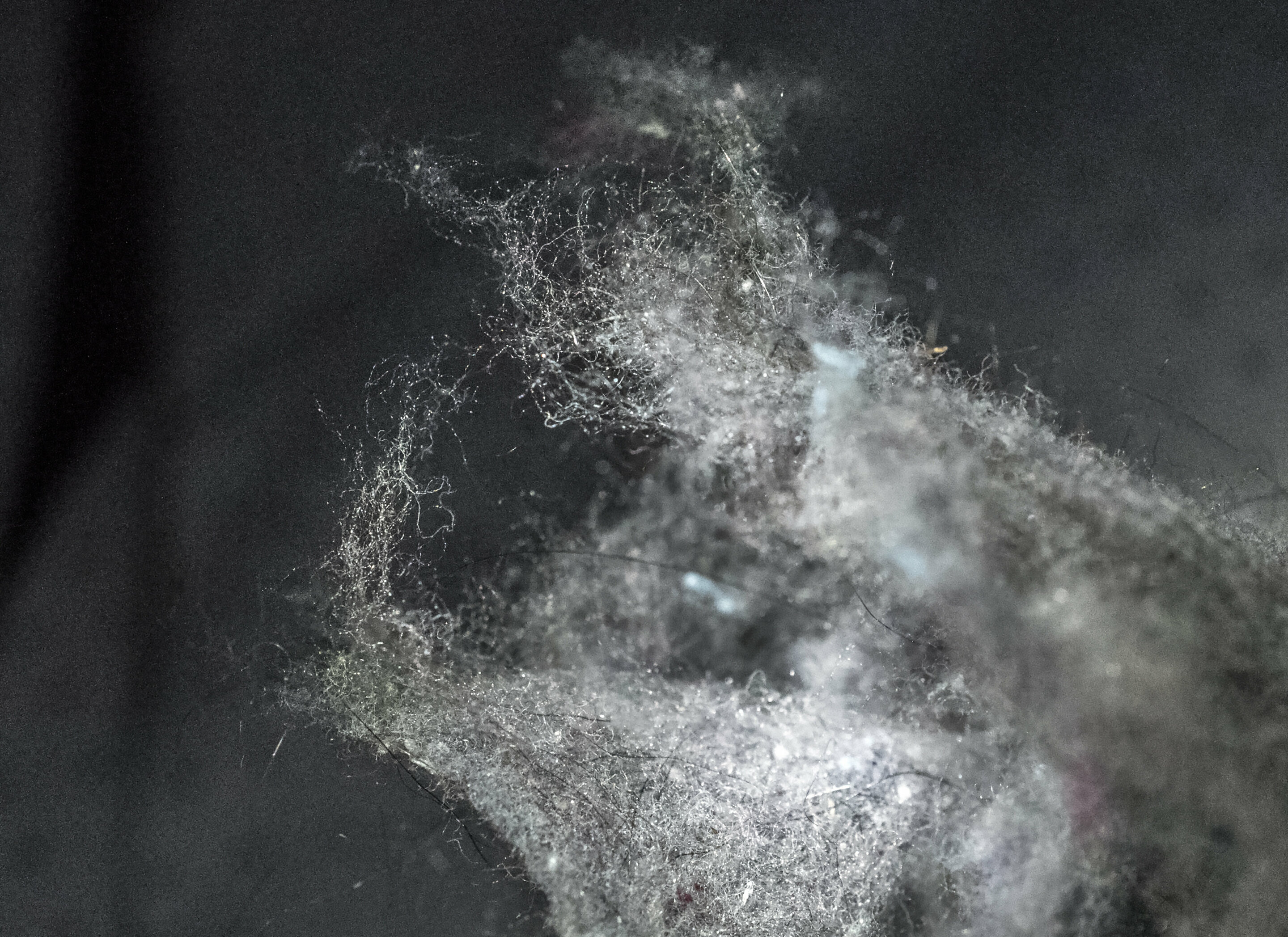Lint captured in a dryer filter consists of tiny fibers that are shed from the fabric. Modern, front-loading washers do not have lint filters. (Credit: Patrick Mansell)
While the polyester leisure suit was a 1970s mistake, polyester and other synthetic fibers like nylon are still around and are a major contributor to the microplastics load in the environment, according to a Penn State materials scientist, who suggests switching to biosynthetic fibers to solve this problem, an article on phys.org suggests.
"These materials, during production, processing and after use, break down into and release microfibers that can now be found in everything and everyone," said Melik Demirel, Lloyd and Dorothy Foehr Huck Endowed Chair in Biomimetic Materials. Unlike natural fibers like wool, cotton and silk, current synthetic fibers are petroleum-based products and are mostly not biodegradable. While natural fibers can be recycled and biodegrade, mixed fibers that contain natural and synthetic fibers are difficult or costly to recycle.
Islands of floating plastic trash in the oceans are a visible problem, but the pollution produced by textiles is invisible and ubiquitous. In the oceans, these microscopic plastic pieces become incorporated into plants and animals. Harvested fish carry these particles to market and, when people eat them, they consume microplastic particles as well.
Demirel suggested four possible approaches to solving this problem, today (Feb. 16) at the 2019 annual meeting of the American Association for the Advancement of Science in Washington, D.C. The first is to minimize the use of synthetic fibers and switch back to natural fibers such as wool, cotton, silk and linen. However, synthetic fibers are less expensive and natural fibers have other environmental costs, such as water and land-use issues.
Close up of the fibers shed from fabric in a clothes dryer. These are the fibers that go down the drain and into the global water system. (Credit: Patrick Mansell)
Because much of the microfiber load that ends up in water sources comes from laundering, he suggests aftermarket filters for washing-machine outflow hoses. Clothes dryers have filters that catch lint—also microfiber waste—but current, front-loading washing machines usually do not.
"Capturing the microplastics at the source is the best filtering option," said Demirel.








